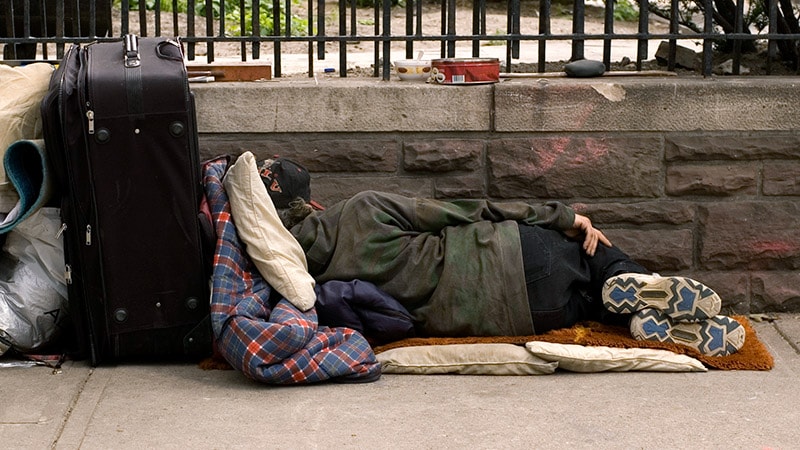Rising Homelessness in New York City

Is the Great America Isn’t Great Anymore: Rising Homelessness in New York City
Introduction: The streets and subways of New York City, known for their bustling energy and relentless pace, have become a stark reminder of societal challenges. Recent data reveals a troubling trend: homelessness in the city has reached its highest recorded level since 2005, with 4,140 individuals found living on the streets and subways during a one-night field survey. This rise has sparked widespread concern and calls for deeper examination into its underlying causes.
This year’s increase comes as the city has struggled to provide shelter to up to 70,000 migrants each night. New York City’s social services commissioner, Molly Wasow Park, said that while officials do not expect an increase in migrants living in streets and subways, the city is monitoring the situation “very closely.”
Causes of Rising Homelessness:
-
Affordable Housing Shortage: New York City has long struggled with a shortage of affordable housing. Skyrocketing rent prices and a lack of low-income housing options force many residents into precarious living situations. As a result, individuals and families facing financial instability are more likely to fall into homelessness.
-
Economic Inequality: Despite being a hub of wealth and opportunity, New York City also experiences profound economic disparities. The city’s high cost of living combined with income inequality means that even those with jobs may struggle to make ends meet. For vulnerable populations, such as veterans, single parents, and individuals with disabilities, financial setbacks can quickly lead to homelessness.
-
Impact of COVID-19: The COVID-19 pandemic exacerbated existing homelessness issues. Job losses, evictions, and disruptions to support services left many without stable housing. Although efforts were made to provide temporary relief, the long-term effects continue to linger, pushing more individuals onto the streets.
-
Challenges in Mental Health and Substance Abuse Treatment: A significant proportion of the homeless population in New York City grapples with mental health disorders and substance abuse issues. Limited access to adequate treatment facilities and support services means that many individuals do not receive the necessary care, perpetuating cycles of homelessness.
-
Systemic Issues and Policy Gaps: Critics argue that systemic issues, including inadequate funding for homeless services and a fragmented approach to addressing root causes, contribute to the persistence of homelessness. Policy gaps in areas such as eviction prevention, affordable healthcare, and job training further exacerbate the problem.
Community Response and Advocacy:
Despite these challenges, community organizations and advocacy groups continue to work tirelessly to support homeless individuals. Initiatives focusing on housing-first approaches, mental health outreach, and job placement programs aim to provide holistic support and pathways out of homelessness.
Government Action and Accountability:
City officials have acknowledged the severity of the homelessness crisis and have pledged to increase funding for supportive housing initiatives. However, advocates emphasize the need for sustained investment in affordable housing development and comprehensive social services.
Conclusion:
The rising homelessness in New York City reflects broader societal issues that require urgent attention and collaborative efforts at local, state, and federal levels. As the city grapples with its highest recorded homelessness levels in nearly two decades, the resilience of its communities and the effectiveness of its policies will be critical in addressing this humanitarian crisis and restoring the promise of a truly great America for all its citizens.
In the face of adversity, the true measure of greatness lies not just in economic prosperity but in compassion and equity, ensuring that no one is left behind in the pursuit of a better future.
This report aims to delve into the complex factors contributing to homelessness in New York City, providing a comprehensive overview while highlighting the need for compassionate and effective solutions.